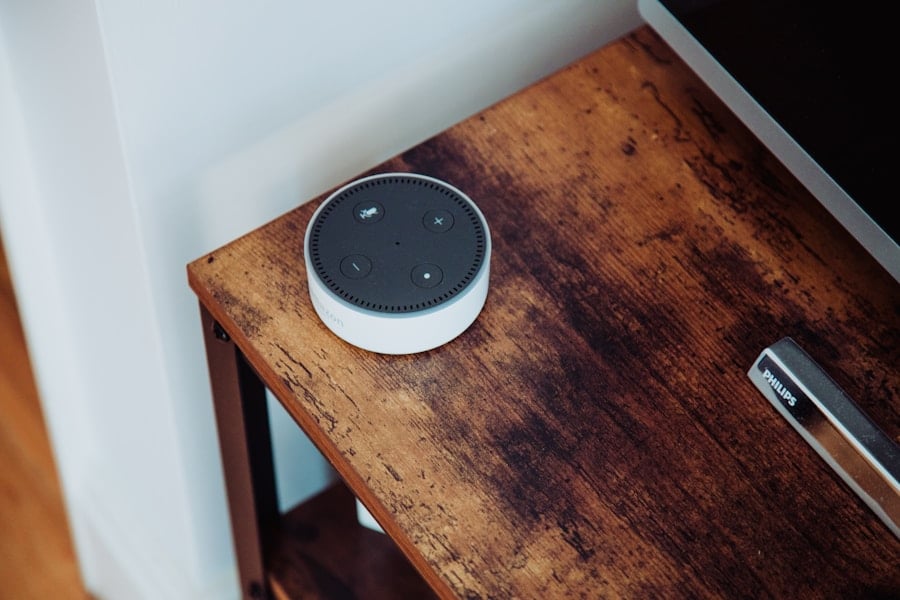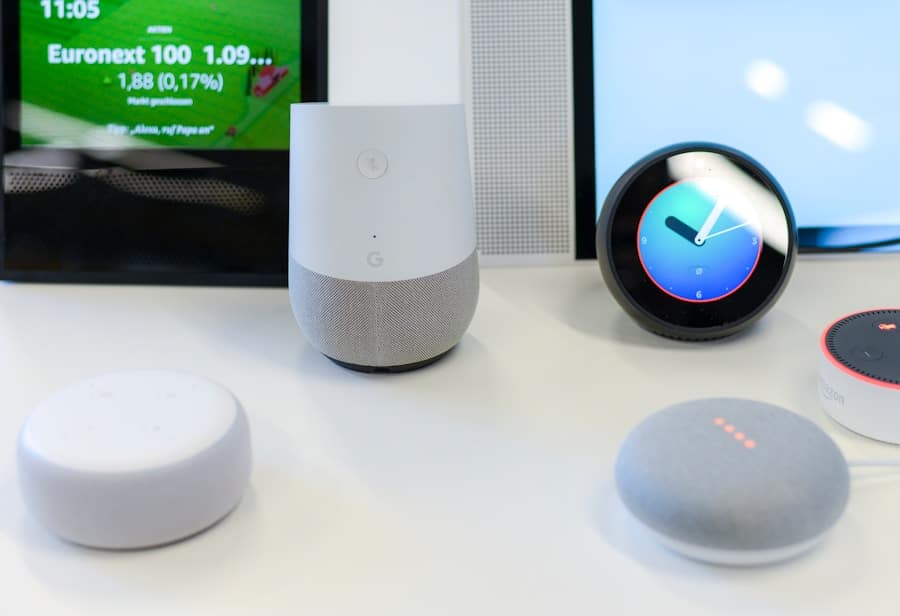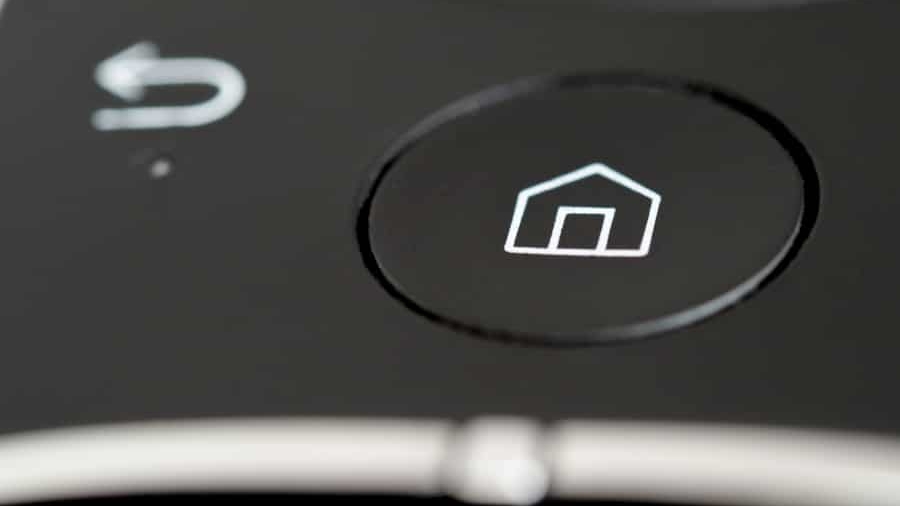The advent of smart home technology has revolutionized the way we interact with our living spaces. Smart home interfaces serve as the central hub for controlling various devices, from lighting and heating to security systems and entertainment units. These interfaces can take many forms, including mobile applications, web platforms, and voice-activated assistants.
The integration of these technologies has made it possible for homeowners to manage their environments with unprecedented ease and efficiency. As the Internet of Things (IoT) continues to expand, the demand for intuitive and responsive smart home interfaces has surged, prompting developers to innovate and enhance user experiences. At the heart of this evolution lies artificial intelligence (AI), which plays a pivotal role in transforming traditional home automation into a more intelligent and adaptive system.
By leveraging AI, smart home interfaces can learn from user behaviors, preferences, and routines, allowing for a more personalized and seamless interaction. This article delves into the intricacies of AI within smart home interfaces, exploring its benefits, challenges, and future potential in creating smarter living environments.
Key Takeaways
- Smart home interfaces are revolutionizing the way we interact with our homes, allowing for greater convenience and control.
- Artificial Intelligence (AI) is the technology that enables smart home interfaces to learn and adapt to user preferences and behaviors.
- AI in smart home interfaces offers benefits such as improved energy efficiency, enhanced security, and personalized user experiences.
- AI plays a crucial role in personalizing user experiences by analyzing data and predicting user needs and preferences.
- The integration of AI with voice control and natural language processing allows for more intuitive and natural interactions with smart home devices.
Understanding Artificial Intelligence (AI)
Machine Learning and Pattern Recognition
Machine learning, a subset of AI, involves training algorithms on large datasets to recognize patterns and make predictions based on new data. This capability is particularly relevant in the context of smart home interfaces, where user interactions generate vast amounts of data that can be analyzed to improve functionality.
Deep Learning and Neural Networks
Deep learning, another critical aspect of AI, utilizes neural networks to process information in a manner similar to the human brain. This technology has enabled significant advancements in natural language processing (NLP), computer vision, and robotics.
AI in Smart Home Applications
In smart home applications, deep learning algorithms can enhance voice recognition systems, enabling users to control devices through spoken commands. As AI continues to evolve, its integration into smart home interfaces is becoming increasingly sophisticated, allowing for more intuitive interactions and improved user satisfaction.
The Benefits of AI in Smart Home Interfaces

The incorporation of AI into smart home interfaces offers numerous advantages that enhance both functionality and user experience. One of the most significant benefits is automation. AI-driven systems can learn from user habits and preferences over time, allowing them to automate routine tasks such as adjusting thermostats, turning lights on or off, or managing security settings.
For instance, a smart thermostat equipped with AI can analyze historical temperature data and user behavior to optimize heating and cooling schedules, resulting in increased comfort and reduced energy costs. Moreover, AI enhances the interoperability of various smart devices within a home ecosystem. With the ability to communicate and share data across platforms, AI can facilitate seamless integration between devices from different manufacturers.
This interoperability allows users to create customized routines that involve multiple devices working in concert. For example, a user could set up a “movie night” routine that dims the lights, adjusts the thermostat, and turns on the television with a single command. Such capabilities not only simplify user interactions but also create a more cohesive smart home experience.
The Role of AI in Personalizing User Experience
Personalization is a key aspect of modern technology, and AI plays a crucial role in tailoring smart home interfaces to individual users. By analyzing data collected from user interactions, AI can identify patterns and preferences that inform how devices respond to commands. For instance, if a user consistently adjusts their living room lighting to a specific brightness level during evening hours, an AI-enabled system can learn this preference and automatically adjust the lighting accordingly in the future.
Furthermore, AI can enhance personalization through predictive analytics. By anticipating user needs based on historical data, smart home interfaces can proactively suggest actions or adjustments. For example, if a user frequently sets their coffee maker to brew at 7 AM on weekdays, the system can remind them or even initiate the brewing process automatically on those days.
This level of personalization not only improves convenience but also fosters a sense of connection between users and their smart home systems.
The Integration of AI with Voice Control and Natural Language Processing
Voice control has emerged as one of the most popular methods for interacting with smart home devices. The integration of AI with natural language processing (NLP) has made it possible for users to communicate with their devices using everyday language rather than complex commands or technical jargon. This advancement has significantly lowered the barrier to entry for users who may not be tech-savvy but still wish to enjoy the benefits of smart home technology.
AI-powered voice assistants like Amazon Alexa, Google Assistant, and Apple Siri utilize NLP algorithms to understand and respond to user queries effectively. These systems can interpret context, recognize different accents or dialects, and even handle follow-up questions or commands. For instance, a user might ask their voice assistant to “turn on the living room lights,” followed by “and set them to blue.” The ability to understand multi-part commands enhances the fluidity of interactions and makes controlling smart home devices feel more natural.
AI’s Impact on Energy Efficiency and Home Automation

Optimizing Energy Consumption
AI algorithms can analyze energy usage patterns and suggest adjustments that lead to more efficient operation of appliances and systems. For example, smart thermostats can learn user preferences and adjust heating or cooling schedules based on occupancy patterns. If a household is typically empty during certain hours of the day, an AI-enabled thermostat can lower the temperature during those times and raise it just before occupants return home. This not only conserves energy but also ensures that homes remain comfortable without unnecessary expenditure.
Real-time Energy Monitoring
Moreover, AI can facilitate real-time monitoring of energy consumption across various devices within a smart home ecosystem. By providing users with insights into their energy usage habits through dashboards or alerts, these systems empower homeowners to make informed decisions about their energy consumption.
Empowering Homeowners
For instance, if an appliance is identified as an energy hog during peak hours, users can be prompted to adjust its usage or replace it with a more efficient model. By leveraging AI-driven smart home interfaces, homeowners can take control of their energy consumption, reduce their environmental footprint, and enjoy significant cost savings.
Overcoming Challenges and Limitations of AI in Smart Home Interfaces
Despite the numerous advantages that AI brings to smart home interfaces, several challenges and limitations must be addressed for widespread adoption. One significant concern is data privacy and security. As smart home devices collect vast amounts of personal data to function effectively, there is an inherent risk associated with potential breaches or misuse of this information.
Users must be assured that their data is protected through robust encryption methods and transparent privacy policies. Another challenge lies in the complexity of integrating diverse devices from various manufacturers into a cohesive system. While AI can enhance interoperability, achieving seamless communication between devices often requires standardized protocols that are not universally adopted across the industry.
This fragmentation can lead to compatibility issues that frustrate users who wish to create an integrated smart home environment. Additionally, there is the issue of reliance on internet connectivity for many AI-driven features. In areas with unstable internet access or during outages, users may find themselves unable to control their devices effectively.
Developing offline capabilities for essential functions could mitigate this limitation and enhance user experience during connectivity disruptions.
The Future of AI in Smart Home Interfaces
Looking ahead, the future of AI in smart home interfaces appears promising as technology continues to advance at an unprecedented pace. One potential development is the increased use of edge computing in smart homes. By processing data locally on devices rather than relying solely on cloud-based systems, edge computing can reduce latency and improve response times for real-time applications.
This shift could lead to even more responsive and efficient smart home systems. Furthermore, advancements in machine learning algorithms will likely enhance the predictive capabilities of smart home interfaces. As these systems become better at understanding user behavior and preferences over time, they will be able to offer increasingly personalized experiences that adapt dynamically to changing needs.
For instance, future systems may anticipate seasonal changes in energy usage patterns or even adjust settings based on external factors such as weather forecasts.
Imagine being able to visualize how different lighting settings would look in your living space through an AR application before making adjustments or seeing real-time energy consumption data overlaid on your appliances as you interact with them.
Such innovations could further enhance user engagement and understanding of their smart home environments. As we move forward into an era where smart homes become increasingly commonplace, the role of AI will undoubtedly expand beyond mere automation into realms of deeper personalization and proactive assistance. The potential for creating truly intelligent living spaces that cater to individual lifestyles is vast, paving the way for a future where our homes are not just automated but genuinely attuned to our needs and preferences.
In a recent article discussing the role of AI in creating more intuitive smart home interfaces, it is important to consider the best software for fault tree analysis in 2023. Fault tree analysis plays a crucial role in identifying potential failures in complex systems, which is essential for ensuring the reliability and safety of smart home devices. By utilizing advanced software tools for fault tree analysis, developers can better understand the potential risks associated with AI-powered smart home interfaces and design more robust systems. To learn more about the best software options for fault tree analysis in 2023, check out this article.
FAQs
What is AI?
AI, or artificial intelligence, refers to the simulation of human intelligence in machines that are programmed to think and act like humans. This includes tasks such as learning, problem-solving, and decision-making.
What is a smart home interface?
A smart home interface is the system or platform that allows users to interact with and control various smart devices within their home. This can include voice commands, touchscreens, mobile apps, and other forms of user interface.
How does AI contribute to creating more intuitive smart home interfaces?
AI can contribute to creating more intuitive smart home interfaces by enabling devices to learn from user behavior and adapt to their preferences. This can result in more personalized and seamless interactions with smart home devices.
What are some examples of AI-powered features in smart home interfaces?
Examples of AI-powered features in smart home interfaces include voice recognition, predictive behavior analysis, and the ability to automate tasks based on user habits and preferences.
What are the benefits of using AI in smart home interfaces?
The benefits of using AI in smart home interfaces include improved user experience, increased efficiency and convenience, and the ability to create more personalized and adaptive environments within the home.

